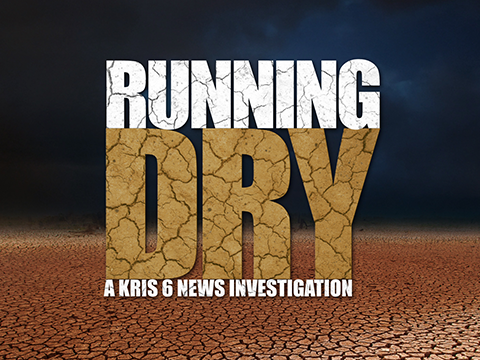CORPUS CHRISTI, TEXAS — As we celebrate the 50th anniversary of the Apollo 11 mission, we have a look back at the vital role a NASA facility here in Corpus Christi played in America's space program.
We were reminded of that recently by Rob Bailey, pastor of Southside Community Church and a self-described “NASA enthusiast.”
He recently invited us out to Bill Witt Park on Yorktown Boulevard for a look around.
“Behind me stood a 30-foot S-band antennae dish which was able to receive audio and video signals from space,” Bailey said.
It was cutting edge technology in the early 1960's and it’s historic for several reasons:
The first live broadcast from space was from Apollo 7 in October 1968. And so during that broadcast they showed for the first time live pictures from space. And there were only two dishes in the world like this that could receive those transmitted signals, this one and one similar to it at Cape Kennedy. and so the broadcast started over Corpus Christi and continued as the spacecraft went over the Gulf Coast and the continuation when it was over Cape Kennedy.
NASA's decision to build it here was based on orbital mechanics.
“When they were looking at the different orbits, the spacecraft would go over this part of the country more often than any other part of the country,” Bailey said.
This tall rectangular structure that is still out there was the base of a 75-foot range tracking antennae. And it was used to receive signals from the various scientific experiments that the Apollo missions left on the moon.
After station operations were closed down in the 70's, the control room building was trashed by vandals before it was torn down.
And these rusty bolts on a concrete slab are all that's left of the S-band antennae.
The 50th anniversary of Apollo 11 also brings back memories for Michael Benning of Corpus Christi.
His family moved here in 1966 when his father became the assistant administrator of the tracking station.
“He wore a lot of hats,” Benning said. “He took care of security was under him, but he still worked the missions, when there was a capsule he was at the station, we didn't see much of him during those time periods.”
Benning says his father was extremely proud of his work.
“Daddy worked with the space program from the early Mercury missions up thru Skylab,” he said. “So through all of the really important--to my mind --- important parts of the space program.”
Back in the 1960’s and ‘70s, there was actually a lot of criticism of the space program. Some people felt it was a waste of money. And Benning says, even today, we’ve lost sight of the many things we take for granted that were spinoffs from space exploration.
“Micro-processors,hand-held computers, medical technology, medical telemetry, and we forget that all of that came out of the space program,” Benning said. “People forget it was beneficial and ultimately very worthwhile project not for just getting a man into space.”



